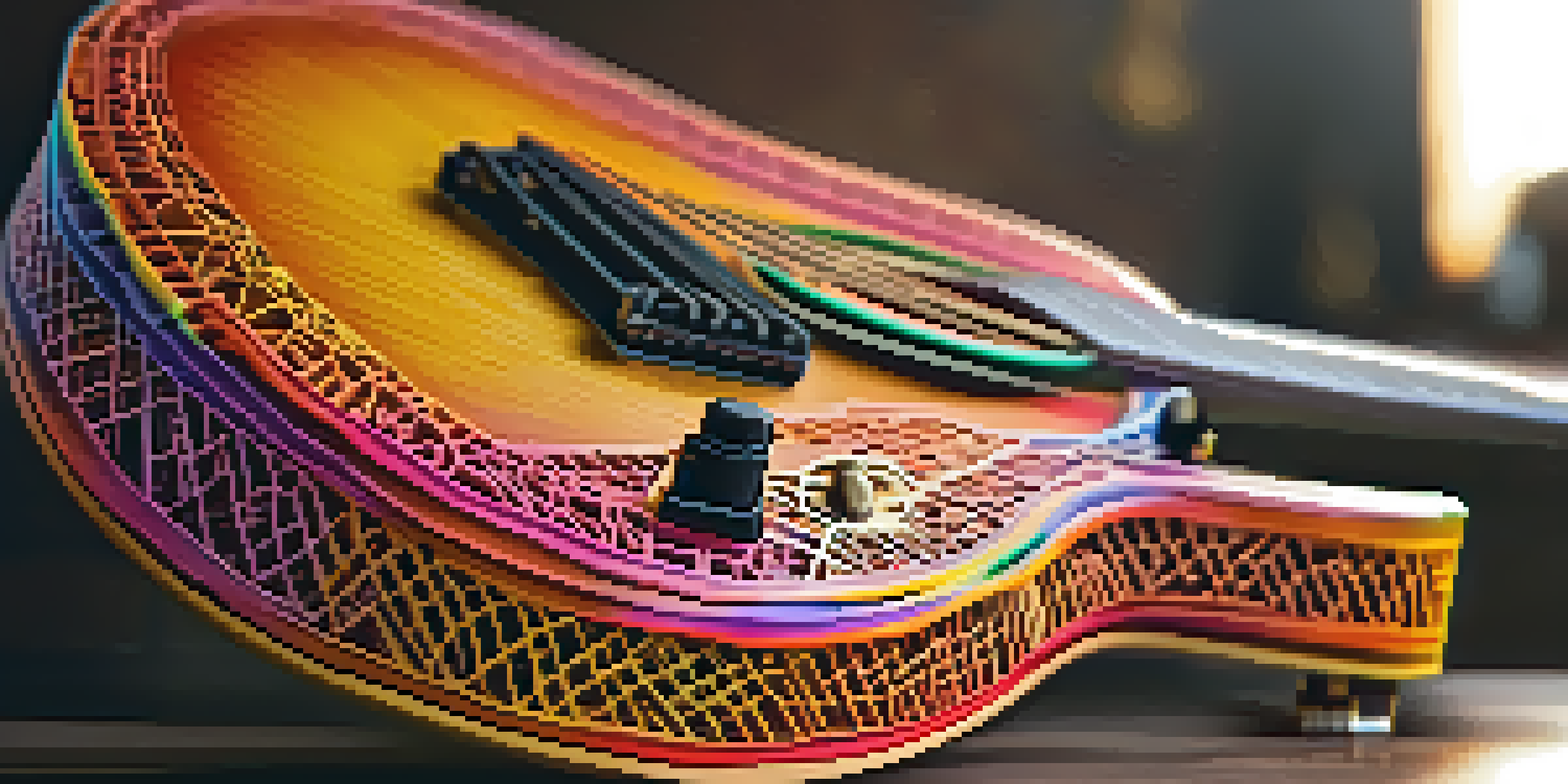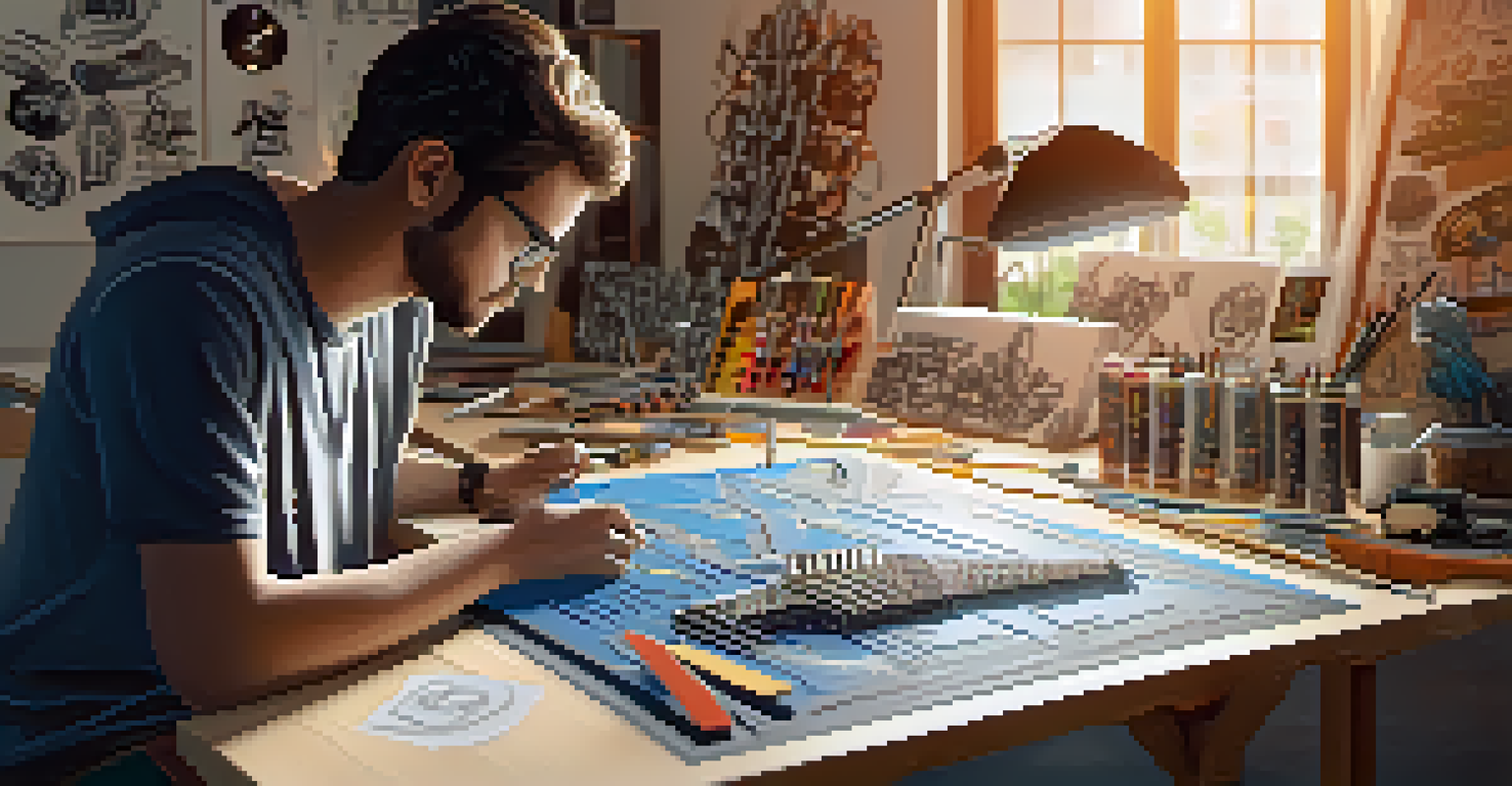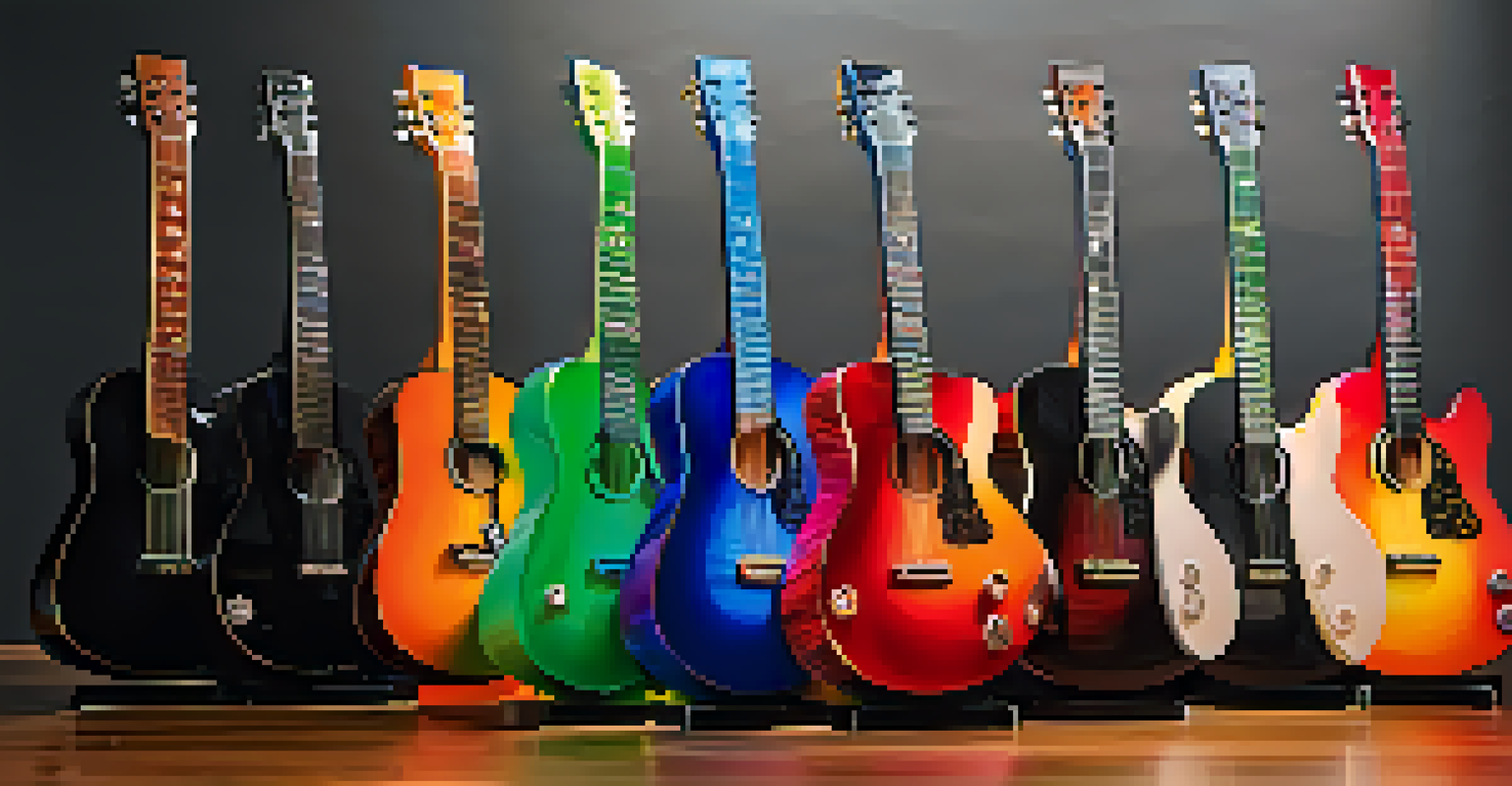3D Printing in Guitar Making: A New Era of Customization

The Rise of 3D Printing in the Music Industry
3D printing has taken the music industry by storm, particularly in guitar making. This innovative technology allows luthiers to create intricate designs that were previously impossible or highly time-consuming to produce. With advancements in materials and printing techniques, guitars can now be customized to meet the specific needs and preferences of musicians.
3D printing is not just a technology; it's a revolution in how we create and customize instruments that reflect our individuality.
Imagine being able to design a guitar body that fits perfectly in your hands or has a unique shape that reflects your personal style. 3D printing makes this possible, opening doors for creativity and personalization. As musicians seek instruments that resonate with their artistic vision, the demand for custom guitars has soared.
Moreover, 3D printing reduces the lead times associated with traditional guitar making. Instead of waiting weeks or months for a custom instrument, musicians can now receive their dream guitars in a fraction of the time.
Benefits of Customization through 3D Printing
One of the most exciting aspects of 3D printing in guitar making is the level of customization it offers. Musicians can choose everything from the shape of the body to the type of wood and even the hardware. This ability to tailor an instrument to one’s specific preferences enhances the playing experience, allowing for greater expression and comfort.

For instance, a guitarist who loves a particular sound can experiment with different body shapes and materials to find the perfect combination. This isn't just about aesthetics; it’s about performance and feel. Each musician can create an instrument that truly resonates with their style and sound.
Customization Revolutionizes Guitars
3D printing allows musicians to create uniquely customized guitars tailored to their personal preferences and playing styles.
Additionally, 3D printing allows for rapid prototyping. If a player wants to try out a new design, they can print a prototype quickly, test it out, and make adjustments before committing to the final product.
The Materials Behind 3D Printed Guitars
When it comes to 3D printing guitars, the choice of materials is crucial. While traditional guitars are often made from solid woods, 3D printers can utilize a variety of materials, including plastics, composites, and even metals. Each material has its own unique properties that can affect the sound and feel of the instrument.
The future of music is not just in the notes we play but in the tools we use to express them.
For example, using a high-quality polymer can lead to lightweight yet durable designs, making guitars easier to play for extended periods. On the other hand, some luthiers experiment with metal and composite materials to create unique tonal qualities that stand out in a band's mix.
As technology evolves, new materials are continually being developed, expanding the possibilities for guitar makers. This means that musicians can expect more innovative designs and sounds in the near future.
Sustainability in Guitar Making with 3D Printing
Sustainability is a growing concern in many industries, and guitar making is no exception. Traditional guitar production often involves the use of rare woods, which can contribute to deforestation and environmental issues. 3D printing offers a more sustainable alternative by using materials that are often recycled or less environmentally harmful.
By reducing waste and allowing for precision in design, 3D printing minimizes the need for excess materials. Luthiers can create exactly what they need without significant leftover scraps, promoting a more eco-friendly approach to guitar manufacturing.
Sustainable Practices in Production
The use of 3D printing in guitar making promotes sustainability by minimizing waste and reducing reliance on rare woods.
Furthermore, with the ability to create parts on demand, the overproduction of instruments can be greatly reduced. This shift not only helps the environment but also encourages a more mindful approach to music production.
The Role of Technology in Guitar Customization
Technology plays a pivotal role in the customization of guitars through 3D printing. Software programs allow musicians to design their instruments with precision, making it easy to visualize their ideas before they are printed. This integration of technology empowers players to take control of their instrument creation process.
Once a design is finalized, the 3D printer takes over, translating digital designs into tangible products. The precision of modern printers means that even the most intricate designs can be realized without compromising quality. This level of accuracy ensures that each guitar not only looks stunning but also plays beautifully.
As the technology continues to develop, we can expect even more sophisticated tools that will further enhance the customization process. Musicians will have access to features and capabilities that were previously unimaginable.
Real-Life Examples of 3D Printed Guitars
Several companies and luthiers have begun embracing 3D printing, showcasing the potential of this technology in guitar making. Brands like Luxion and 3D Varius have created guitars that highlight the unique designs that can be achieved with printing technology. These instruments often serve as both functional guitars and pieces of art.
Musicians have shared their experiences with 3D printed guitars, noting the comfort and performance improvements. For instance, some players have reported that the weight and balance of their custom guitars allow for longer playing sessions without fatigue.
Future of Guitar Making is Bright
As technology advances, 3D printing is set to transform the guitar-making industry with new designs and collaborative opportunities.
These real-life examples illustrate how 3D printing is not just a gimmick but a genuine game-changer in the world of guitar making, providing musicians with tools to express their individuality.
The Future of Guitar Making with 3D Printing
As we look toward the future, it’s clear that 3D printing will continue to shape the guitar-making industry. The technology is still evolving, and as it does, we can expect even more innovative designs and materials to emerge. This evolution will not only impact custom guitars but also mass-produced instruments as companies begin to adopt these techniques.
The potential for collaboration between musicians and luthiers will also expand, allowing for a more interactive design process. Imagine a world where musicians can easily share their designs with others and collaborate on creating unique instruments.

Ultimately, 3D printing is paving the way for a more personalized and sustainable future in guitar making, where every musician can find or create their perfect instrument.